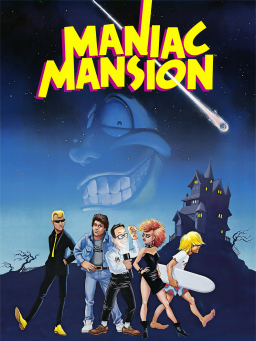
Maniac Mansion is a 1987 graphic adventure video game developed and published by Lucasfilm Games. It follows teenage protagonist Dave Miller as he attempts to rescue his girlfriend Sandy Pantz from a mad scientist, whose mind has been enslaved by a sentient meteor. The player uses a point-and-click interface to guide Dave and two of his six playable friends through the scientist's mansion while solving puzzles and avoiding dangers. Gameplay is non-linear, and the game must be completed in different ways based on the player's choice of characters. Initially released for the Commodore 64 and Apple II, Maniac Mansion was Lucasfilm Games' first self-published product.

Treasure Island Dizzy is a puzzle video game published in 1989 by Codemasters for the Amstrad CPC and ZX Spectrum, and later ported to the Commodore 64, NES, Amiga, Atari ST and Atari Jaguar.
Andrew Nicholas Oliver and Philip Edward Oliver, together known as the Oliver Twins, are British twin brothers and video game designers.
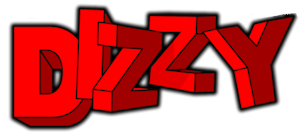
Dizzy is a series of video games, created by the Oliver Twins and published by Codemasters. It was one of the most successful British video game franchises of the late 1980s and early 1990s. Originally created for the ZX Spectrum and Amstrad CPC, the series appeared on multiple home computer and video game console formats, with over a dozen games being published between 1987 and 1992.

The Super FX is a coprocessor on the Graphics Support Unit (GSU) added to select Super Nintendo Entertainment System (SNES) video game cartridges, primarily to facilitate advanced 2D and 3D graphics. The Super FX chip was designed by Argonaut Games, who also co-developed the 3D space rail shooter video game Star Fox with Nintendo to demonstrate the additional polygon rendering capabilities that the chip had introduced to the SNES.

The Codemasters Software Company Limited is a British video game developer and former publisher based in Southam, England, which is a subsidiary of American corporation Electronic Arts and managed under the EA Sports division. Founded by brothers Richard and David Darling in October 1986, Codemasters is one of the oldest British game studios, and in 2005 was named the best independent video game developer by magazine Develop. It formerly also published third-party games.
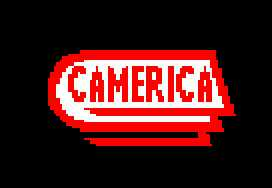
Camerica was a Canadian video game company founded in 1988. It released various unlicensed video games and accessories for the Nintendo Entertainment System, such as the Game Genie, and was the North American publisher for British developer Codemasters.

Fantastic Dizzy is a 1991 video game developed by Codemasters. It is part of the Dizzy series. It was published on several platforms, including Mega Drive/Genesis, Master System, Game Gear, Nintendo Entertainment System, Amiga, and MS-DOS.
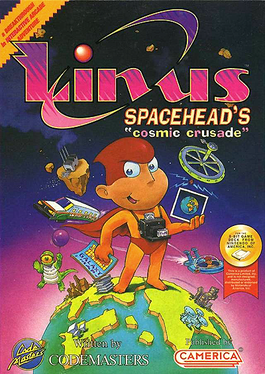
Linus Spacehead's Cosmic Crusade is a video game released in 1992 by Codemasters for the Nintendo Entertainment System. A remake of the game, retitled Cosmic Spacehead, was released in 1993 for Amiga, MS-DOS, Game Gear, Master System, and Genesis. The game features adventure elements, with locations connected by platform sections.

Fantasy World Dizzy is an arcade adventure video game released in October 1989 by Codemasters and designed by the Oliver Twins.
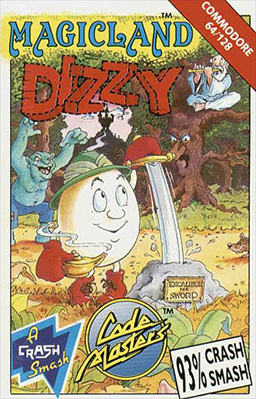
Magicland Dizzy is a platform adventure game published in Europe in 1990 by Codemasters for the ZX Spectrum, Commodore 64 and Amiga platforms. By 1992 there were also MS-DOS, Atari ST and Amstrad CPC versions available. It is the sixth game in the Dizzy series, and the fourth adventure-based Dizzy title. The story, set in a fantasy world called Magicland, follows on from the events of Fantasy World Dizzy, the previous adventure title. In Magicland Dizzy the player controls Dizzy, an egg-shaped character, who is trying to save six of his friends who have been placed under spells by the Evil Wizard Zaks.
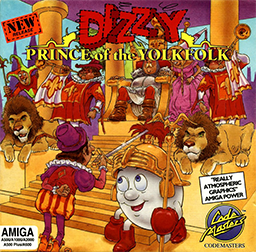
Dizzy: Prince of the Yolkfolk is an adventure video game published in December 1991 by Codemasters for the Amstrad CPC, Atari ST, Commodore 64, ZX Spectrum, MS-DOS, NES and Amiga. It was the sixth game in the Dizzy adventure series. Initially it was only released as part of the Dizzy's Excellent Adventures compilation. The creators of the series, the Oliver Twins, outsourced the video game company Big Red Software to design and develop the game. The game interface and mechanics resemble those of Magicland Dizzy, discarding changes introduced in the fifth game.

The Excellent Dizzy Collection is a video game compilation published by Codemasters in November 1993. The title includes three stand alone games, based on the video game character Dizzy created by the Oliver Twins. The compilation contains, Dizzy the Adventurer, Panic Dizzy and the previously unreleased Go! Dizzy Go! Ports were slated for release in January 1994 for Master System and Mega Drive, but only the Game Gear version saw release, and only in Europe.
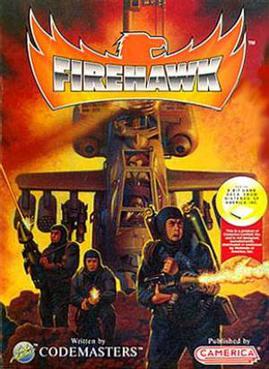
FireHawk is an unlicensed game developed by Codemasters which was released by Camerica for the Nintendo Entertainment System. This game has the player being commissioned by the President of the United States to stop the trafficking of drugs into the United States. The player flies an Apache helicopter to different places around the world and the player must destroy the drug traffickers' factories. It is very similar to Desert Strike and the rest of the "Strike" series, and nearly identical to Raid on Bungeling Bay, which was released for the Commodore 64 in 1984 as well as the Nintendo Entertainment System and MSX computers in 1985. On 1993, an unrelated action game Firehawk was shown by Sony.

The Lion King is a platform game based on Disney's 1994 animated film of the same name. The game was developed by Westwood Studios and published by Virgin Interactive Entertainment for the Super NES and Genesis in 1994, and was ported to MS-DOS, Amiga, Game Gear, Master System, and Nintendo Entertainment System. The Amiga, Master System, and NES versions were only released in the PAL region. It is the final licensed NES game worldwide. The game follows Simba's journey from a young cub to the battle with his uncle Scar as an adult.
Micro Machines is a series of video games featuring toy cars, developed by Codemasters and published on multiple platforms. The series is based on the Micro Machines toy line of miniature vehicles.

The Ultimate Stuntman is a 1990 video game developed by Codemasters and published by Camerica for the Nintendo Entertainment System (NES), featuring action game elements. The Ultimate Stuntman is one of 14 video games published by Camerica for the NES without proper licensing. The company had to create their own cartridges that would bypass Nintendo's lock-out chip and break the 10NES "code". In virtually all of Camerica's games there is a switch found on the reverse side of the cartridge, this allows the user to switch between NTSC and PAL compatibility.
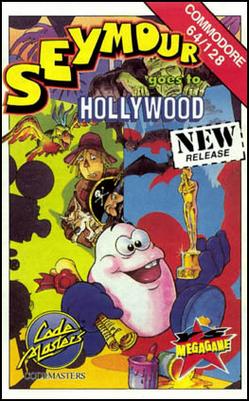
Seymour Goes to Hollywood, also known as Seymour at the Movies, is a platform and adventure game developed by Big Red Software and originally published in Europe by Codemasters in 1991. Players control Seymour, a small potato-like creature who wishes to be a film star. The film's script has been locked in a safe, meaning Seymour must solve puzzles by collecting and using objects scattered throughout the game in order to progress, ultimately retrieving the script and allowing filming to start.
Quattro is a series of video game compilations released in the 1990s. They consisted of games developed by Codemasters. The NES versions were released as multicarts and were published by Camerica without a license by Nintendo.

















